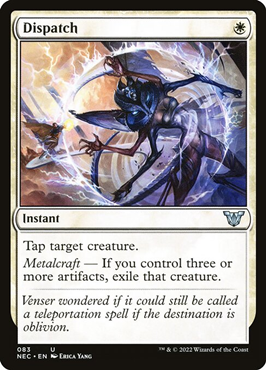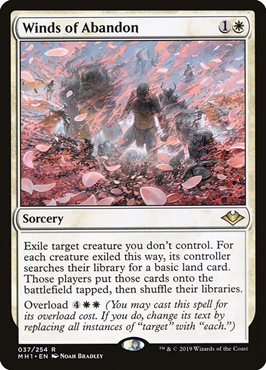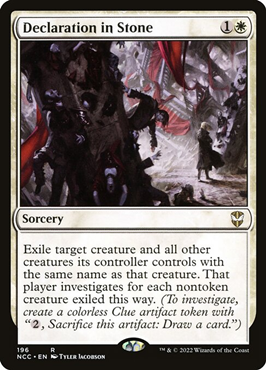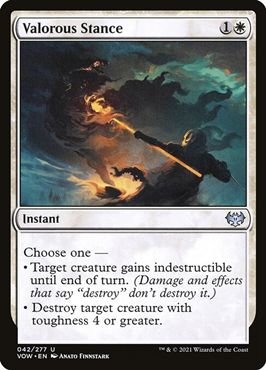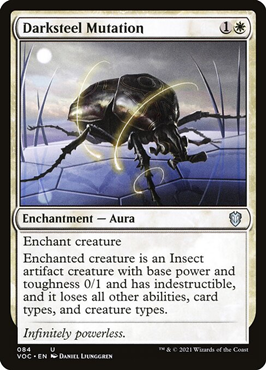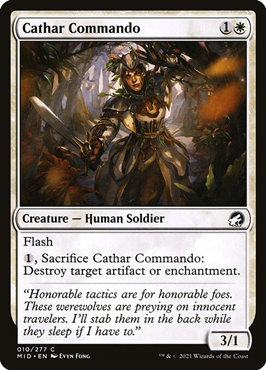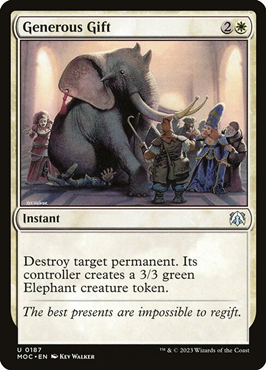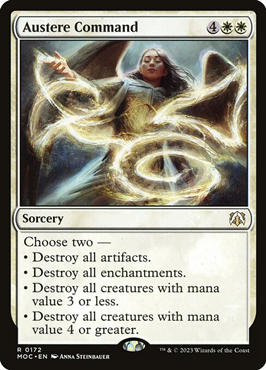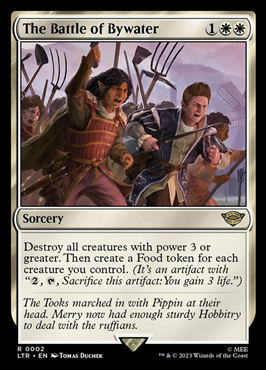White is the color with some of the best removal. There are so many options that sometimes it’s challenging finding the one that’s right for your deck. Kristen takes us through how to pick the white removal that works for you in Commander.
The premier white removal spells are Swords to Plowshares and Path to Exile. For some reason, debate on the efficacy of these cards consistently hinges on which is “better” when really, we should be evaluating which is better for your deck.
Now, in a vacuum, I would say Swords to Plowshares is the better pick because most of the time giving an opponent extra mana in Commander, in 2023, is a lot worse for you than giving them a little extra life. Aggro and Damage is starting to scale better for 40 life, so the extra lift from Swords matters less than it once did.
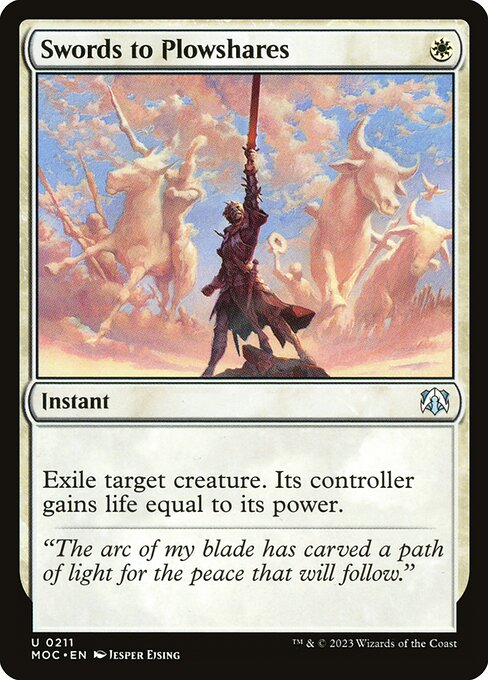
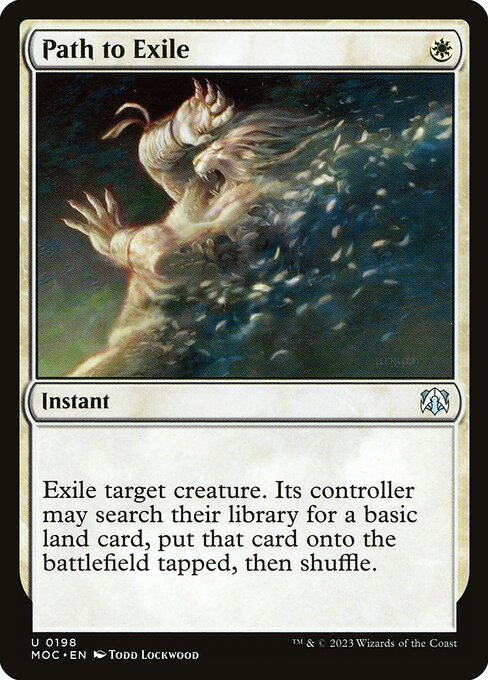
That said, it’s far from a clear cut. Path has extra utility in various situations. If you’re unconcerned about mana production and tempo, and your win con involves combat damage, then Path to Exile can be better. This is especially true if you’re not scaling damage exponentially or if your win is determined through non-evasive, smaller creatures.
There are also cards like Archaeomancer’s Map, Deep Gnome Terramancer and Smuggler’s Share that minimize the “cost” of playing Path; not to mention older staples like Land Tax and Knight of the White Orchid.
Swords does have more utility than merely not giving an opponent a land, though — it can buy you an extra turn in the same way as it can give an opponent one. You can use it reactively to gain life from your own creature so you don’t die. A +1/+1 counter deck and lifegain decks enjoy this added utility.
That said, in mono-white, you always want both. Outside of mono-white? There’s probably one you want more, but you should consider other options too.
Variations on a Classic
Dispatch is the first variation, and if you’re on equipment, treasures or artifacts (whether ramp, creatures, or both), then Dispatch should be picked highly. If you can consistently turn it on with Ancient Den, Darksteel Citadel and early rocks and dorks like Esper Sentinel, it’s usually the best removal spell in the deck.
Instant speed removal is great, but at all but the highest levels of play, Sorcery speed spells are more than good enough for your removal suite. And even then, many scenarios demand you play your removal as soon as you untap anyways.
Winds of Abandon is a second Path to Exile that can also function as a one sided wrath. It’s an awesome card.
Recently, I built Nahiri, Forged in Fury and endeavored to include some on-theme cards. What I discovered is that Declaration in Stone has aged well.
Giving an opponent a clue in exchange is better than it used to be. Decks these days are greedy with mana and draw plenty of cards anyways, so sinking two of their mana to draw a card feels decidedly tame.
It also has the upside of being able to decimate a token army for just two mana, which is surprisingly relevant.
Speaking of decimating an army, Settle the Wreckage doesn’t see nearly enough play. It’s a fog, sure, but it’s also a way to ramp in white. If you’re at all going wide with tokens, there’s no reason not to run Settle.
You can spend four mana to get anywhere from three to five lands on average, which is a really good rate — especially because you can do so after damage but before moving to Second Main Phase.
Flexibility, as we’ll learn as we go through these spells, is key. Valorous Stance gets rid of a lot of scary stuff for two mana while also being a stellar protection spell.
If you play haymakers or suit up creatures with auras or equipment, Valorous Stance should be in your protection suite. While you won’t always be able to do weird stuff like target an opponent’s Mirrorwing Dragon to save your board from a wrath, you can still rest easy knowing you have a spare answer.
If you run any tutors like Enlightened Tutor, I want to make a case for Darksteel Mutation. Being able to tutor up an answer is powerful, and while Recruiter of the Guard into Solitude is a barnstorming line, it’s also really expensive to buy into on paper.
What makes Mutation eminently useful is it keeps a problem creature in play instead of sending it to the Command Zone or Graveyard to be recast/recurred. It’s why I’m also a big fan of Prison Term.
Want You Back
One of white’s strengths is its ability to recur key pieces from the graveyard. It’s particularly great at getting back mana value 3 or less stuff (like Darksteel Mutation).
Cathar Commando satisfies both the need for instant-speed interaction and the desire to repeat the effect. It’s arguably the best Disenchant in white these days, so pick up some copies if you don’t have any.
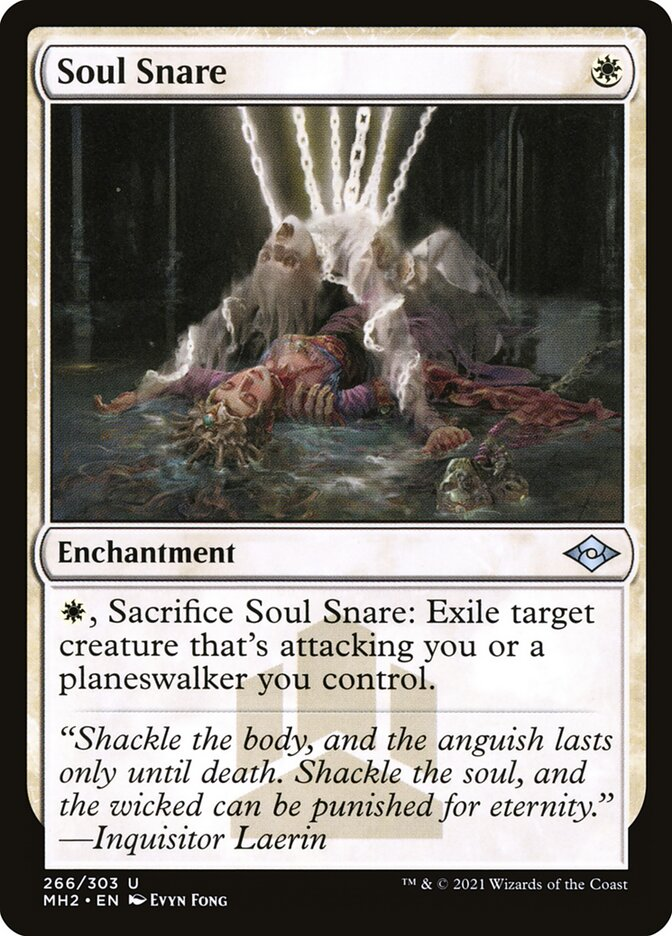
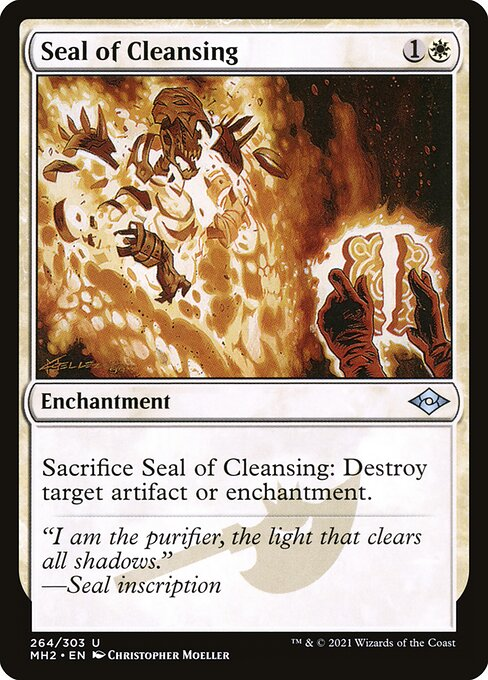
You don’t always get instant speed and recurrable, but you can invest on your turn to achieve that goal. Both Soul Snare and Seal of Cleansing can be activated as a trick and recurred with Sun Titan/Sevinne’s Reclamation et al.
They’re also useful as a “rattlesnake” effect, which can be the tool you need to slow down a game’s tempo. Virtual Card Advantage is still huge in Commander, and on-board tricks contribute to it.
If Virtual Card Advantage isn’t enough and you want to go slower still, then there’s always Aura of Silence. It’s not hard stax, and you should feel OK playing it — especially if you can leverage recursion.
Flexibility is Key
So far we’ve discussed flexible use cases, but not flexibility proper.
Generous Gift will always top your list after Swords and/or Path. It’s instant speed and removes anything, even problem lands and Planeswalkers.
Don’t get bogged down in opting to always cut down your curve, either. Sometimes the best effects require a little more mana.
I’ve found myself using Oblation again in token strategies (because, like Declaration in Stone, giving opponents some cards these days matters less and less; like Settle the Wreckage, we can use it on our own stuff). March of Otherworldly Light is also worth a look in mono white.

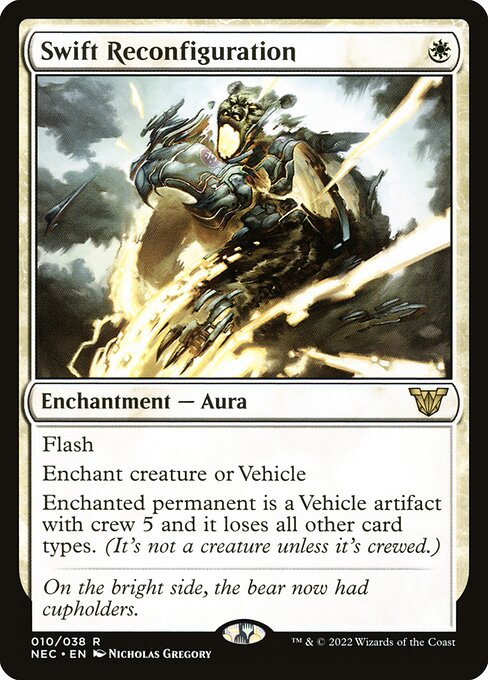
Think outside the box a little. Touch the Spirit Realm is Banishing Light, but it’s also way more similar to Valorous Stance due to other use cases.
Swift Reconfiguration is the same; it can turn your creature into a car to save it from removal, but it can also interrupt another player’s lines (like turning their Dockside Extortionist into a car before Rionya can target it).


Again, putting removal effects on creatures and sacrificing instant-speed interaction for recurrability is sometimes the way to go. Skyclave Apparition is very flickerable/recurrable and answers most early to mid game issues.
Loran is tutorable, can draw cards, has Vigilance and two great, build-around types in Legendary and Human.
Is Council’s Judgement better? In a vacuum, maybe. In practice, people are wise to it, and it requires you to be behind to get the most value.

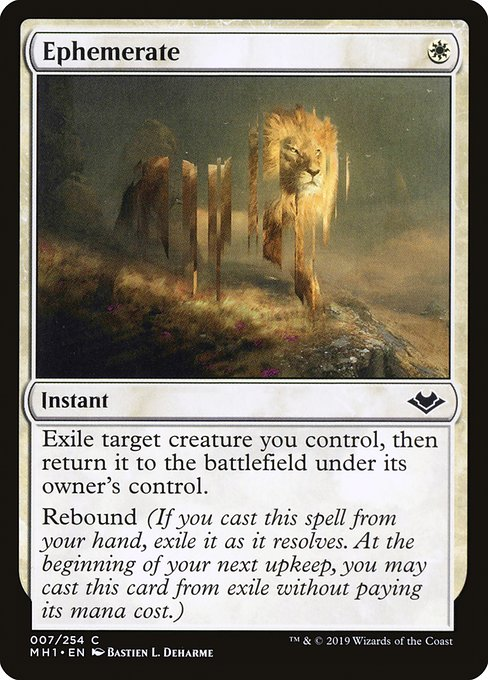
If you don’t want to play Crush Contraband over Return to Dust (even though the latter is ostensibly a sorcery speed effect) then consider spending that mana on something better. Teleportation Circle costs the same and lets you re-use EtB removal, and at the floor, resets a mana rock or flickers Solemn Simulacrum.
Ephemerate is just one mana for up to two EtBs! Even if you use the first to save something, you’re still getting to rebuy an effect the second time.
Choosing a Board Wipe
There are more board wipes in white than can be dreamt of in your philosophy. Most of them are accessible and cheap, so it’s worth thinking about what they can do for you before just jamming in whatever you’ve got.
Austere Command still remains a banger of wrath. No matter the boardstate, you can make this work out better for you than for anyone else. It excels in more specific builds but is still solid elsewhere.


There are options for enchantress and for artifacts decks.
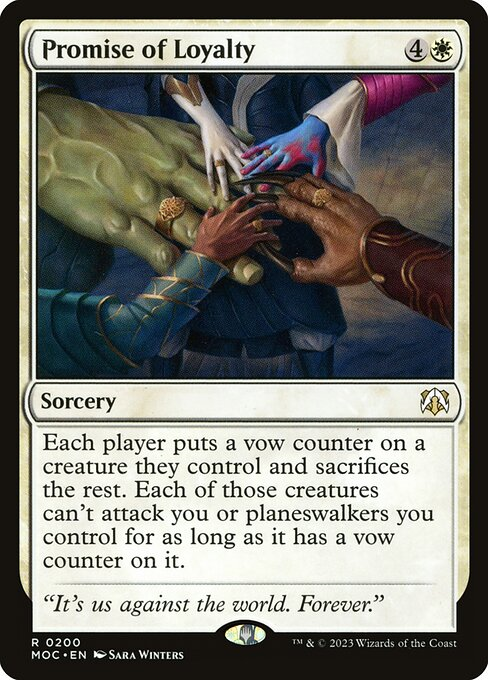

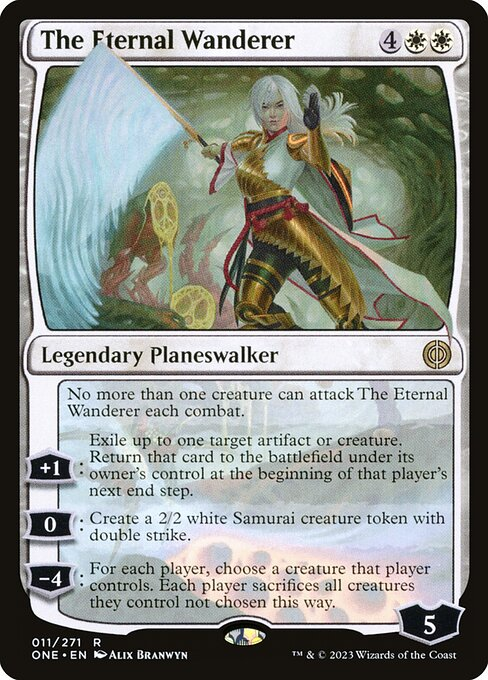
If you want to go wide, then forcing sacrifices is a great way to get around the likes of Heroic Intervention and Boros Charm.
If you want cheap, you have Vanquish the Horde or Wrath of God. If you want nuclear, there’s Farewell. And there’s everything in between.
Make sure to pick options that work to break tempo and ensure it’s as far from symmetrical as possible. Don’t get stuck being table-cop if it’s too big a tempo loss.
Wrapping it All Together
The removal you pick should be a conscious process for each deck. While there are definitive “best” options (and it’s possible to build a package, or shell, to apply to new brews) you should always use a critical eye.

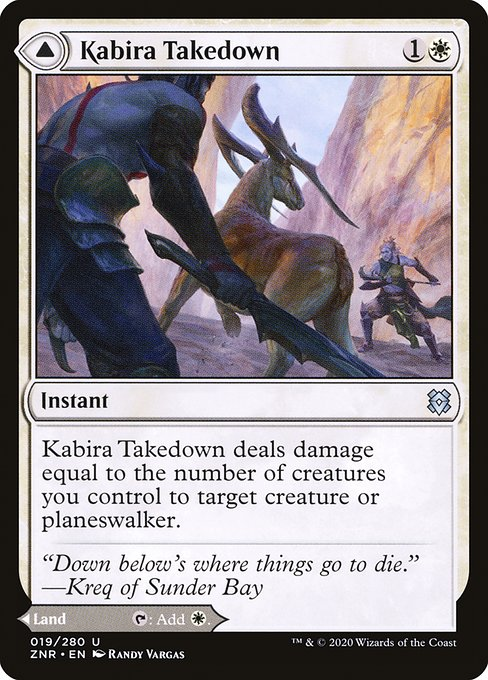
That “package” should include the likes of Eiganjo, Seat of the Empire and Kabira Takedown, if you’re min-maxing, before it includes many of the variant removal spells.
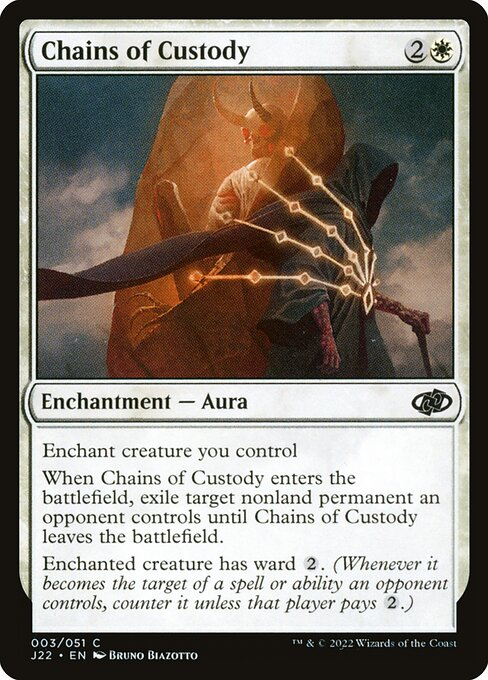
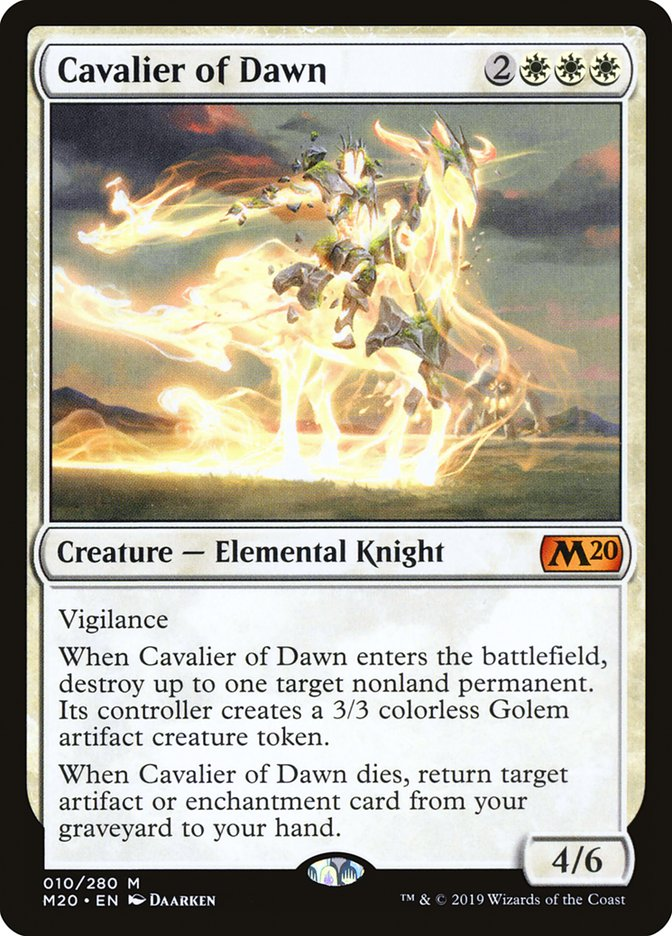
Consider your deck’s synergies. Leonin Relic-Warder and Reliquary Monk excel in a Clerics build, where Citizen’s Crowbar is better in an equipment deck, like Sram. Chains of Custody and Faith Unbroken suit Enchantress, where Solitude and Cavalier of Dawn slot into graveyard or blink based strategies.
Ultimately, you want to make as many lines of text on a card relevant as possible — and you want to, in effect, add lines of text by figuring out all of the niche scenarios where a card overperforms in your specific deck list.
That’s why I’m higher on Battle of the Bywater than your average player right now. It has a lot of potential for synergy in builds outside of decks that care about Food. It’s a one sided wrath that makes artifacts that can gain you life. It’s not just a Food card. What can it do for you?
Engaging lateral thinking in deckbuilding is rewarding, but harder than ever with the deluge of new product. Try to upgrade a little less often so you can test out what cards work for you, and then opt instead to have a proper rebuild once there’s a peak density of new includes to try out. You can always order singles later — and maybe get a better deal.

Kristen is Card Kingdom’s Head Writer and a member of the Commander Format Panel. Formerly a competitive Pokémon TCG grinder, she has been playing Magic since Shadows Over Innistrad, which in her opinion, was a great set to start with. When she’s not taking names with Equipment and Aggro strategies in Commander, she loves to play any form of Limited.


